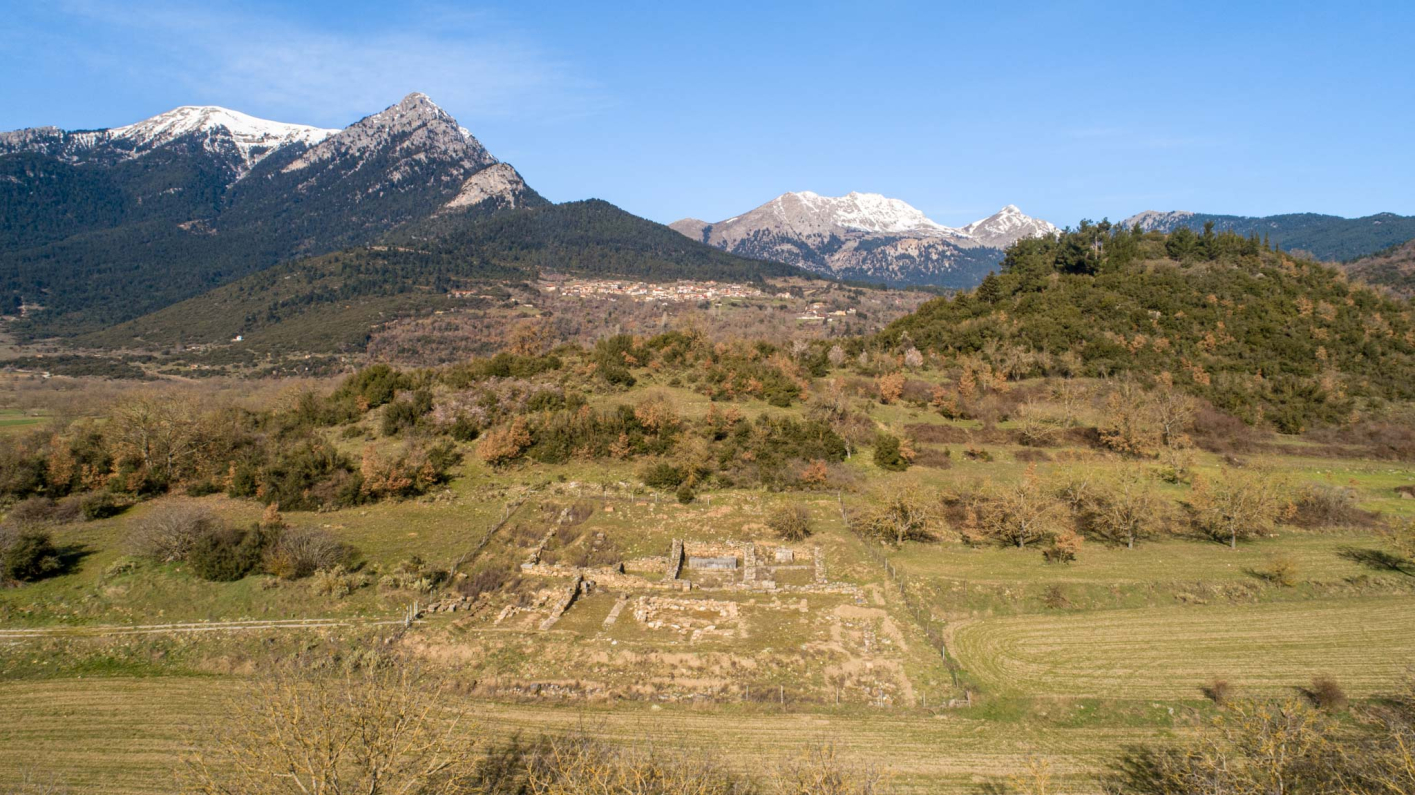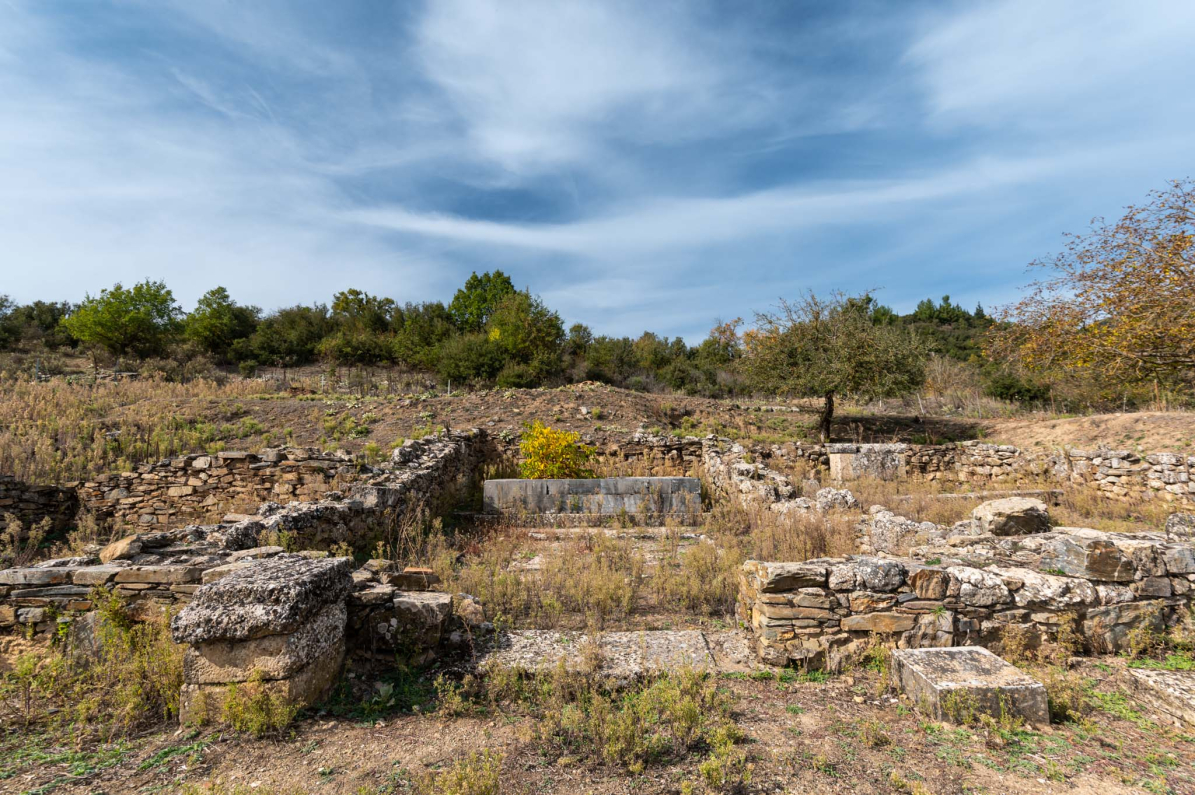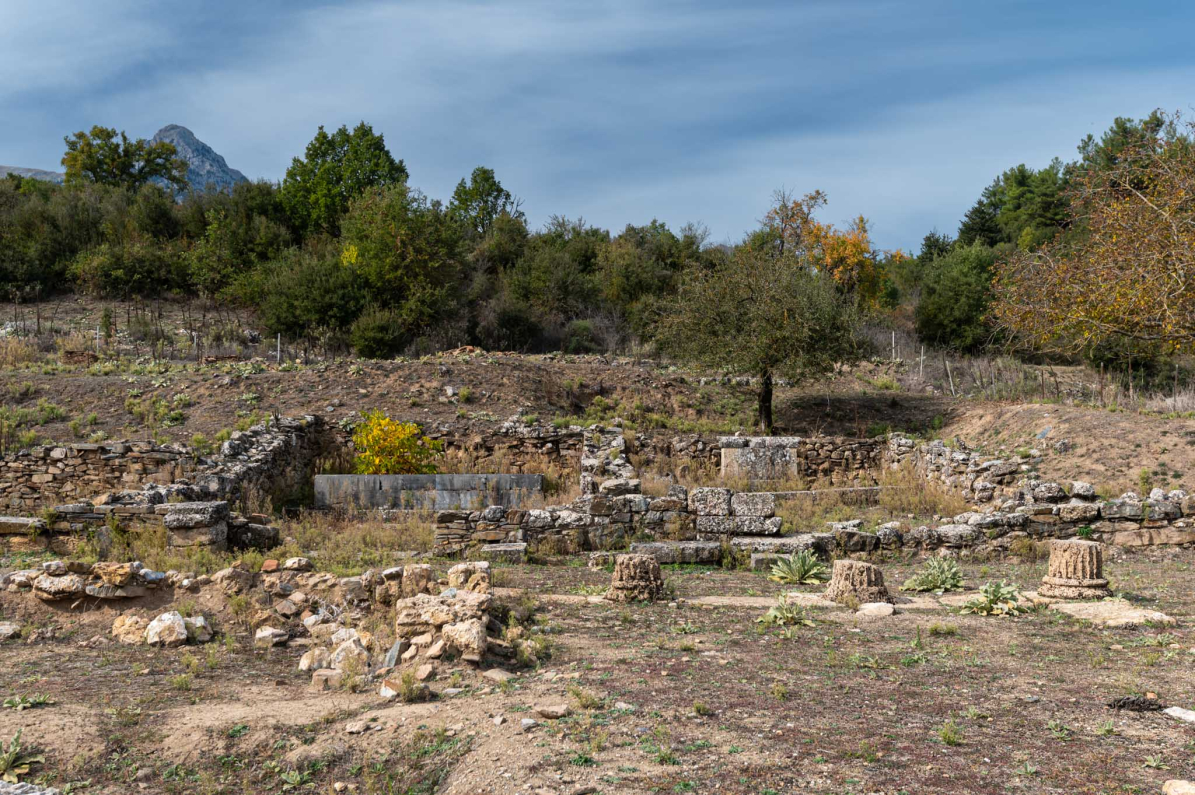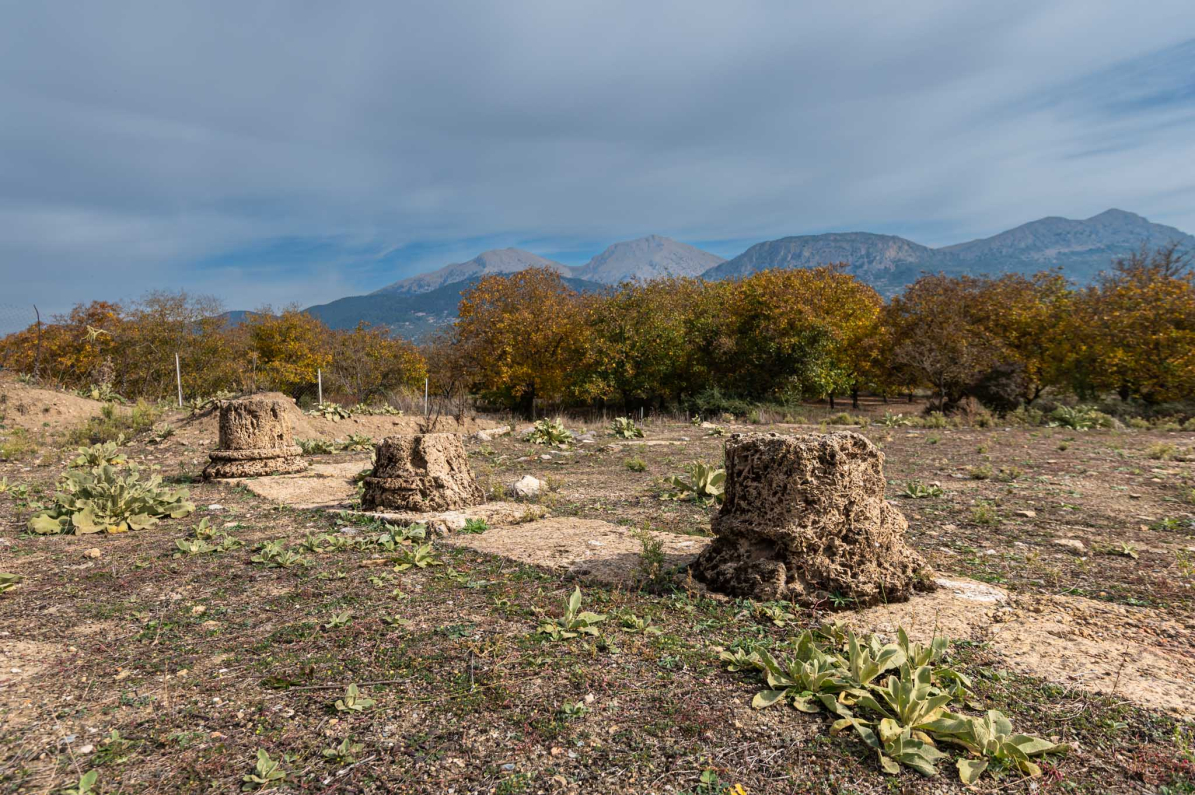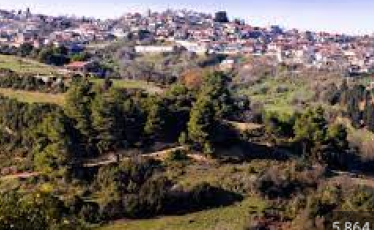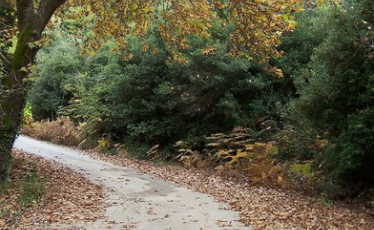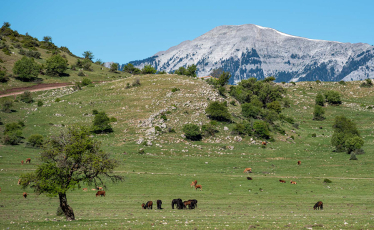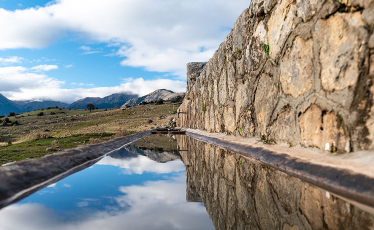At the eastern entrance of the village of Ancient Feneos or Kalyvia, south of the provincial road that connects it with Mesino, on the hill of Agios Konstantinos, lies the archaeological site of Ancient Feneos. The history of the area's habitation dates back to ancient times, where history and myth intertwine into an inseparable knot. According to Greek mythology, Feneos was inhabited by the Pelasgians, and later, around 1900 BC, by Arcadians. In 1500 BC, the Achaeans established the Mycenaean center of Feneos and participated in the Trojan War, with sixty warriors under the leadership of the king of the Arcadians, Agapinor, son of Agaios, and 60 ships provided by Agamemnon, as stated in the Catalogue of Ships in the Iliad's second rhapsody.
The Feneos plateau, according to Greek mythology, was once a vast lake, as the waters of the Olbios River had no outlet and accumulated in the plain, preventing the inhabitants from cultivating the fertile land. It was then that Heracles, who had blood ties to the area since his great-grandmother, Laonome, was from Feneos, decided to drain the area to allow the locals to cultivate it. He constructed large canals, which are still preserved today, and directed the waters into sinkholes that he also created. This myth encapsulates the historical truth of the resourceful Mycenaean Feneans, who, similar to their neighbors in Stymphalia, carried out large drainage works to secure cultivable land.
Heracles maintained close ties with the region, so when he stole the tripod of Pythia from Delphi, he came to Feneos to build his own oracle. Near the acropolis of the ancient city, he was confronted by Apollo, leading to a fierce battle between them, which was stopped by Zeus with a thunderbolt. But in Feneos, it wasn't only Heracles who played a significant role. Another important myth suggests that the sinkholes served as entrances to the Underworld, from where Demeter descended to find her only daughter, Persephone. This myth clearly reflected the fact that in the ancient city of Feneos, the "Kidaria Demeter" was worshiped with rituals similar to those of the Eleusinian Mysteries.
Excavations on the Acropolis also uncovered a sanctuary of Asclepius with significant findings. Specifically, the area was excavated between 1958 and 1961 by the Ephor, Ms. E. Deilaki. The revealed temple had dimensions of 10 × 6.10 meters, and a rectangular base was found, upon which two enormous marble feet with sandals, each 80 centimeters long, were placed. Behind the base, a marble female head was discovered, 80 centimeters tall, with alabaster eyes, dating to 150 BC, and depicting the goddess Hygieia. Excavations carried out a few years ago by the Ephorate of Antiquities of Corinth and the Austrian Archaeological Institute in Athens revealed a wall running along the entire northern slope of the Acropolis, extending 230 meters, reinforced with four semicircular towers, emphasizing the strategic importance of the city. Additionally, traces of Middle Helladic habitation (from the 21st to the 16th century BC) were found on the naturally formed plateau of Agios Konstantinos. Deeper excavations revealed traces of habitation from the Neolithic period for the first time in Feneos.
In this blessed place, which has been inhabited continuously through the ages, according to Pausanias, there was a stadium dedicated to Hermes, where games were held every four years, a sanctuary of Athena Tritonia, and a statue of Hippius Poseidon, dedicated by Odysseus when he found his lost mares grazing in the fertile plain. Today, the visitor can see only a few remnants of the myth of past millennia and centuries. However, in the surrounding atmosphere, one will feel the presence of gods, demigods, and heroes, nymphs, goddesses, and spirits blending with the pure smile, the pure heart, and the warm gaze of the people of the Feneos plain!

